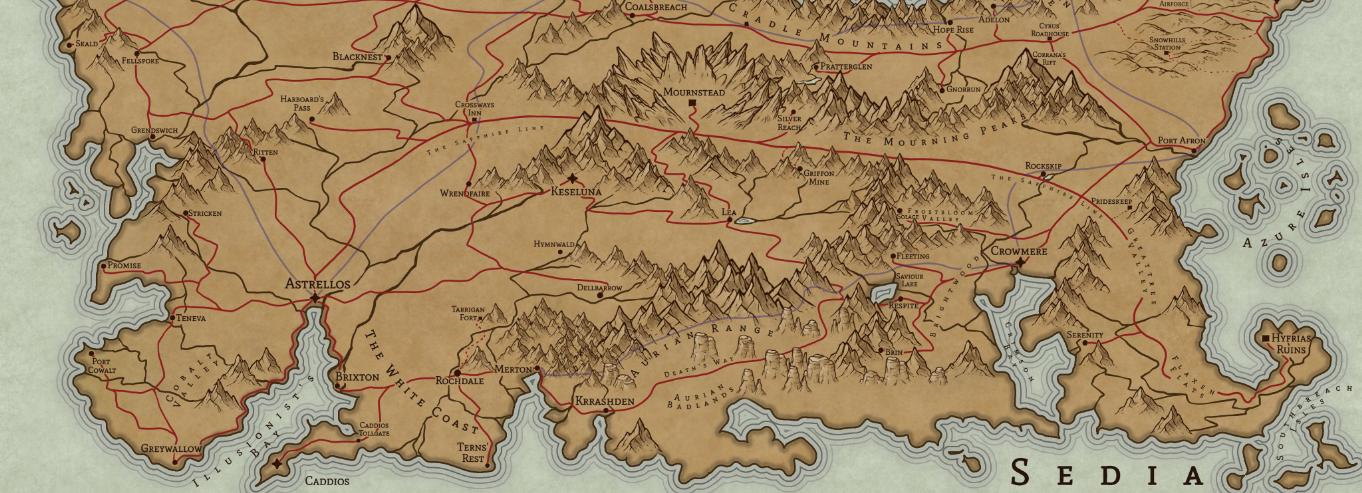Bonemoth
Description
Bonemoths are similar in appearance to other Oblioptera species. They are white in colour, with a greyish body and a rim of starker white along the edges of their wings. They are easily recognisable, however, by their distinct wing notch; a feature unique to their species. With long, tapered bodies, graceful wings and grey legs lined with a tuft of white, they are fairly distinctive when combined with their unique behaviour. Quite large, bonemoths are usually around 90mm in length when fully grown.
Lifecycle
Similarly to other deathmoths, the lifecycle of bonemoths is dependent on decay. The moths begin their lives as eggs laid on the carcasses of deceased animals. Unlike most carrion-feeding creatures, deathmoth larvae are not picky, and while they will start with devouring the leftover flesh on a corpse, they quickly move on to eating through bone. Once they reach a certain size, the larvae will burrow into ground beneath the carcass to pupate. When soft ground is not available, they are happy to adapt. They will happily burrow between cracks in tiles, or walk until they find a secure hiding place. Sometimes, they will simply pupate inside the hollowed out bones of the body they have fed on. The moth continues to develop for around three weeks (varying depending on temperature), when they emerge as fully grown adults. The adults then fly until they catch the scent of death again, landing near a corpse. Here they will mate with others that have been attracted by the corpse, lay their own eggs, and die.
by Spooktacular
Competition
Bonemoths are an obvious niche competitor to carrionflies. Bonemoths are present year-round, less seasonally-dependant than carrionflies. They tend to be more successful in the cooler months when carrionflies are not as prevalent, and are often outcompeted by flies in summer months. However, bonemoths are more sensitive than flies to the scent of rot, and their ability to process bone and utilise more desiccated corpses allows them to continue to thrive even when flies are at their busiest.Bonemoths do tend to freeze and die in their adult form at around -8 degrees celcius, and this slows their lifecycle down in the coldest parts of winter. The larvae are more resilient than the adults and are quite happy to continue feeding and growing when snow is on the ground. In winter, pupal development slows down and the adult moths seem to time their emergence to when the weather returns to a survivable temperature range. They can't survive in properly arctic or alpine landscapes, but are widespread across almost all temperate areas across the globe.
Symbolism and Culture
Bonemoths are an important symbol of Tyhna. Tyhna's Moth Clergy are an order of Tyhneric clerics that assist in the dying process of the terminally ill. The Moth Clergy wear white robes with panels embroidered to look like bonemoth wings, as well as headpieces reminiscent of the antennae of the bonemoth. Many bards and storytellers have used bonemoths in their descriptions of battle and the aftermath of war. Flocks of bonemoths invoke scenes of death and suffering, as well as the more positive imagery of life springing from death. They are a powerful symbol in art and literature. So iconic and heavily used in storytelling, depictions of bonemoths are sometimes regarded by artists as an overused trope. Bonemoths also find themselves represented in idioms, usually because of their close similarity to their closely related Oblioptera cousin the Pale Flocking Moth. Also known as the "Saviour's Moth" or "Fisherman's Moth" because of their tendency to flock near land, pale flocking moths are a useful indicator of safe ground to seafarers, rather than an indicator of death."Not all white flocks are saviours."Legends warn that if on a battlefield, you find that the bonemoths have ignored a particular body, you should too. It's said that bonemoths refuse to eat those who have dishonoured Tyhna, or sometimes other gods such as Ervian or Irasil. It is usually considered a blessing and honour to be touched by bonemoths in death, and its often believed that bodies are "cleaned" of sin or disease when eaten by them.The most distinctive of deathmoths (Oblioptera sp.), bonemoths have long been a symbol of Tyhna and are considered especially sacred to those who follow her. The white wings of the bonemoth are often considered an omen of rebirth and a symbol of spiritual cleanliness and health, despite their ties to death.
"Don't confuse your flocking moths with bonemoths."
-Idioms referring to bonemoths, speaking the moral of not asuming an indicator or sign is always a helpful one, erring on the side of caution.
Schollarly Name: Oblioptera osseophagi
Common Names: Bonemoth, deathmoth, rotmoth
Conservation: Least concern
Range: Widespread, not found in arctic locations.




The art is gorgeous! Love your style! And I love the species, I love the sound of the Moth Clergy's outfits :D
Thank you so much! It was very rushed haha, I'm glad they didn't have a complicated pattern!!